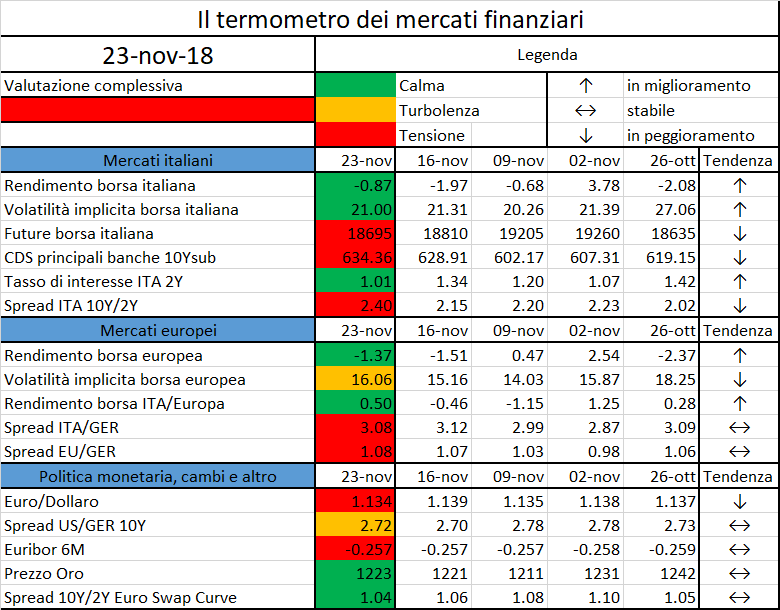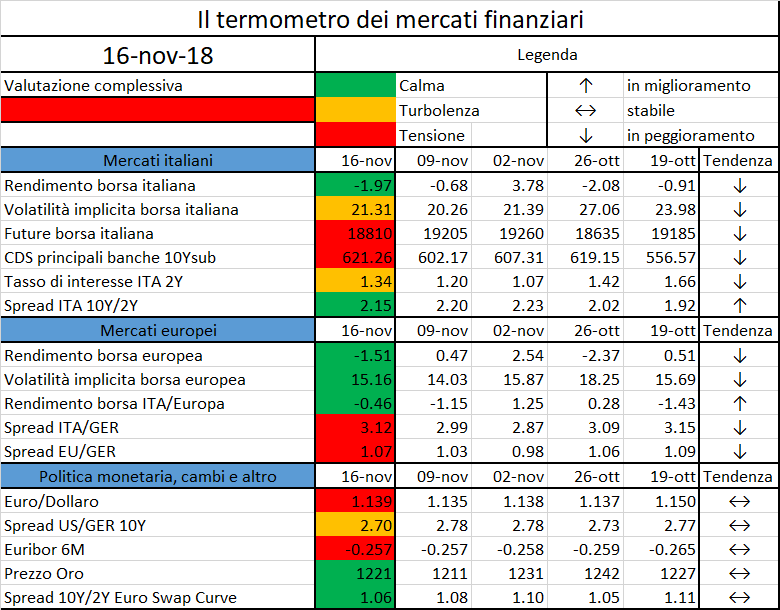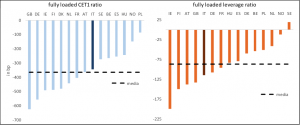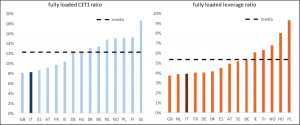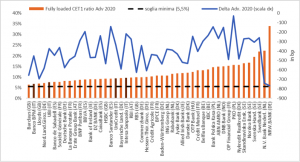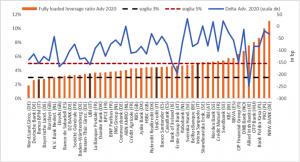Upcoming challenges and new trends for financial institutions
Credit risk management in the banking industry has changed in recent years, mainly as a consequence of the stricter regulations following the financial crisis; further changes, whose magnitude and effects are mostly not predictable, will have an impact in the next decade on its role, scope and organization.
The definition, development and implementation of the interventions needed to keep pace with these changes will require important investments by banks in terms of adoption of new technologies, redefinition of processes and organization, and will imply the need to overcome several challenges. These investments are expected to be compensated by economic returns in the medium-long run, through the possibility to re-allocate staff to more valuable activities, to provide managers with automatic and more comprehensive flows of information fundamental for their strategic decisions and to obtain capital savings thanks to more predictable internal models.
The main trends currently affecting the risk management function, deemed to have an even more important impact in the near future, are related to regulatory topics, digitalization and practices optimization, business development and new risks prevention.
Evolution in the regulatory framework
Financial institutions have recently been facing more stringent regulation therefore significantly expanding their risk management functions. Among the latest regulatory developments affecting credit risk, in December 2017 the legal provisions revising and integrating the Basel III framework, frequently referred to as ‘Basel IV’, have been launched by the Basel Committee. The new dispositions mainly aim to further reduce the variability in the measurement of the RWAs among banks with different dimensions, operating according to diverse regulatory frameworks and business models.
Besides ‘Basel IV’ reforms, in November 2017 the EBA published specific guidelines focused on modelling techniques for the estimation of IRB parameters for defaulted and non-defaulted exposures.
Additionally, it is worth mentioning the process currently being structured by the ECB in order to address the implementation by banks of the new definition of default. The new regulatory framework aims to harmonize the criteria of identification of the default status at European level, therefore minimizing the variability of the RWAs.
Finally, the digitalization process of banking processes currently underway will increase the new regulation issued for the purposes of governing and control this new fields.
Digitalization and practices optimization
Banks business and operational models have evolved in the last decade due to the process of digitalization; it implies the transformation of existing processes by leveraging on the application of digital technologies and data in order to create new value and opportunities. Digitalization represents for the banking industry and risk management the most effective way to reduce costs in a context of persistent margin decline, which is a direct consequence of:
- competition of aggressive FinTechs and banks early-adopting new technologies, with low-cost business models and automated processes, enabling them to provide customers with different kind of offerings;
- low interest rates condition affecting the whole industry;
- increasing regulation, which caused the growth of risk management functions in terms of staff and costs in the last years.
Among tools useful for the risk management function to successfully compete in this evolving framework, advanced analytics and big data systems have already started to prove their effectiveness:
- advanced analytics: new technological and statistical tools (e.g. machine learning) capable to identify complex patterns in richer datasets, enabling the estimation of more accurate and predictive internal models and the reduction of credit losses;
- big data systems: data processing software enabling the analysis of greater amounts of structured and unstructured data in a faster way, made possible by the increased computation power of modern technologies.
Business development
Technological innovation led customers to increasingly demand digital banking services, to be accessible at anytime from any devices, in order to support their everyday decisions. Social media and e-commerce have acquainted clients by means of personalization and brisk fulfilment of their requests. Consequently, it is fundamental for financial institutions to prioritize their digitalization efforts in order to be abreast of the rapid developments in this area. The challenge for banks over the coming years is to be present in key moments of customers’ life, anticipating and satisfying their financial needs while foreseeing variations in their purchasing preferences.
With this aim, advanced statistical algorithms and artificial intelligence systems applied to risk management models and processes will play a fundamental role in meeting customers’ expectations and facilitating business development, anticipating clients’ needs and providing customized solutions. Consequently, the risk function will be called upon to collaborate jointly with each business in order to respond to customers’ demands while limiting risks mainly related to the complexity of supporting processes.
New risks prevention
Beside regulatory risk types such as credit, liquidity, market and operational risk, specific non-financial risks are emerging as result of structural changes concerning financial institutions, including models’ greater complexity, the introduction of digitalization and automation in many processes, as well as the growth of interconnectedness among market players. In this light, new regulations are progressively addressing additional risk types, which are not properly new, but due to their growing importance and their impact on the financial system, deserve accurate management.
Among others, models’ increasing complexity stemming from the adoption of advanced analytics techniques entails the so-called model risk, occurring when a model performs inadequately. It usually derives from underlying data quality or data management issues resulting in misleading outcomes and operational losses; or due to the incorrect model estimation and execution intended as technologies and processes provided to end users to effectively conduct daily operations. To this extent, the optimization of model risk management is becoming a core part of risk activities.
Regulatory expectations on the role of FinTechs
In light of the cross-sectoral transformation of the financial industry, the main Supervisory Authorities are carrying out exercises in order to gather information about the range of financial services provided and innovations applied by FinTechs. The main purpose of the Supervisors is to define the related regulatory treatment and the main areas of intervention, focusing on the following aspects: (1) accessibility of financial services to customers, (2) bringing down operational costs and increasing the efficiency of the financial services sector, (3) enhancing competition in the Single Market by lowering barriers to entry, and (4) balancing greater data sharing and transparency with data security and protection needs.
The main results gathered so far made it possible to identify follow-up initiatives and a roadmap at European level for the following years. In particular, regulators’ expectations are focused on the promotion of technological developments in order to allow opportunities in the FinTech perimeter, while it is of primary importance to ensure consumer protection, as well as integrity of financial markets through sector-specific regulation to be issued.
Impact on credit risk management
In light of the latest evolutions in the regulatory framework, banks are facing, at the same time, an increase in compliance costs – financial institutions will be required to plan an impactful revision of their credit risk-measurement models, as well as of the related internal processes and IT systems – and a reduction in returns due to the raise in capital and liquidity requirements.
On the other side, digitalization represents the opportunity for the banking industry to reduce costs through the use of advanced data analytics and big data systems, enabling the provision of more accurate and performing internal models, leveraging on the automation in order to speed up their development timings and simultaneously reduce the need for manual inputs. To this end, the adoption of new technologies will certainly require the involvement of professional resources characterized by widened analytical-oriented skills.
Additionally, advanced statistical algorithms applied to credit risk management models and processes will play a fundamental role in meeting customers’ expectations and providing customized solutions, likely facilitating business development and making banks more competitive on the market, where FinTechs have become a player of interest for clients. Digitalization will facilitate banks in the processes implying the use of internal models, such as – for instance – credit granting, management reporting and pricing policies. To this purpose, banks will be required to reshape their credit risk management functions, which will be called upon working alongside with several structures, such as business, operations and finance departments; this collaboration will in turn spread and enhance credit risk culture among other strategic areas.
The effectiveness and timely response of banks to the above mentioned trends, and their ability to adapt business models and processes to the evolving environment, will determine their future competitive success. In this context, credit risk management will have the chance to play an important role as one of the leading functions in banks’ strategic change.
Antonio Arfè – Partner Deloitte Consulting
Francesco Zeigner – Partner Deloitte Consulting
Vincenzo Maria Cosenza – Senior Manager Deloitte Consulting




